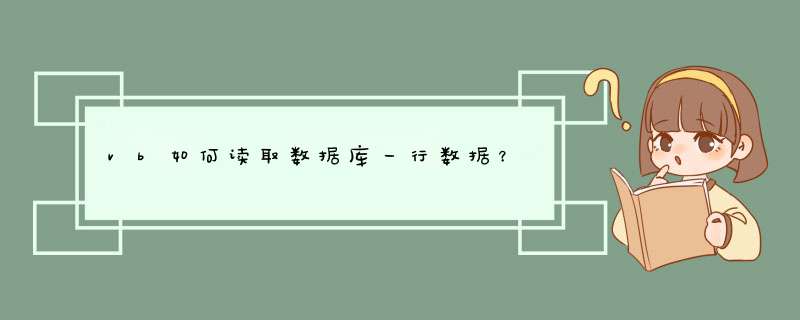
'读取方法:
Imports System.IO
Public Class Form1
Private Sub Button1_Click(ByVal sender As System.Object, ByVal e As System.EventArgs) Handles Button1.Click
Me.ListBox1.Items.Clear()
Dim StrRed As StreamReader = New StreamReader("D:\111.txt", System.Text.Encoding.Default)
While Not StrRed.EndOfStream
Me.ListBox1.Items.Add(StrRed.ReadLine())
End While
StrRed.Dispose()
End Sub
End Class
'其它读写方法:
写入:
Private Sub Button2_Click(ByVal sender As System.Object, ByVal e As System.EventArgs) Handles Button2.Click
Dim strR As New StreamWriter("D:\111.txt", True)'参数True表示 在原来的数据上面添加,如果为False这删除原来的数据 重新写入数据
strR.WriteLine(Me.TextBox2.Text)
strR.Dispose()
End Sub
读取:
Private Sub Button3_Click(ByVal sender As System.Object, ByVal e As System.EventArgs) Handles Button3.Click
Dim strR As New StreamReader("D:\111.txt")
While Not strR.EndOfStream
Me.TextBox1.Text += strR.ReadLine() &vbCrLf
End While
strR.Dispose()
End Sub
可以用ADODB,先定义Dim cnn
As
New
ADODB.Connection
Dim rs
As
New
ADODB.Recordset
这两个cnn用来连接数据库rs用来读取数据库中的值,然后用循环遍历rs将值ADD到listview里面
修改和保存可以做成同一个按钮保存就是遍历listview将数据UPDATE到数据库里面就行!
欢迎分享,转载请注明来源:内存溢出

 微信扫一扫
微信扫一扫
 支付宝扫一扫
支付宝扫一扫
评论列表(0条)